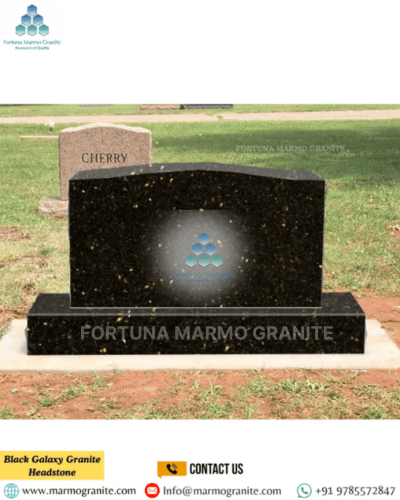How to Clean a Black Granite Headstone: A Step-by-Step Guide
How to Clean a Black Granite Headstone Losing a loved one is one of life's most difficult experiences. A headstone stands as a lasting tribute, a tangible symbol of their memory and a place for you to visit and reflect. Over time, however, even the most durable materials like black granite can become dull, stained, or obscured by moss, lichen, hard water deposits, or general grime accumulated from outdoor exposure. While black granite is celebrated for its resilience and timeless elegance, it still requires thoughtful care to maintain its polished finish and the clarity of its engravings. Cleaning your loved one's headstone is not just about appearance—it is a deeply personal and emotional act of remembrance.
Though the task may feel overwhelming at first, with the right guidance, tools, and gentle methods, it becomes a peaceful and fulfilling experience. This comprehensive guide is designed to walk you through every stage of the process, from understanding which materials and cleaners are safe to use on black granite, to learning how to properly scrub, rinse, and protect the stone without causing any damage. You'll learn what to avoid—such as acidic solutions or abrasive tools—and discover the importance of routine maintenance for long-term preservation.
Understanding the Black Granite Headstone
Before we dive into the cleaning process, it's important to understand why black granite is such a popular choice for memorials. Black granite is not just a uniform black rock; it's a type of igneous rock formed from molten magma. Its dense, crystalline structure makes it incredibly durable, resistant to scratching, and less porous than other stones. This is why it's so popular for inscriptions and etchings, as it provides a beautiful, high-contrast surface.
However, even though it's durable, it can still be damaged by harsh chemicals and abrasive tools. The polished, mirror-like finish is what makes black granite so striking, and this is the surface you want to protect.
Section 1: What You'll Need (Your Cleaning Arsenal)
- Clean, Soft Cloths or Sponges: Microfiber cloths are excellent as they are non-abrasive and highly absorbent. You can also use soft, natural sponges. Avoid using rough rags, scrubbing pads, or steel wool, as these will scratch the polished surface.
- Soft-Bristle Brush: A nylon-bristle brush or an old toothbrush is perfect for getting into engraved letters and crevices. Again, the key is softness. A brass or steel brush will cause irreparable damage.
- A Bucket or Two: One for your cleaning solution and one for rinse water.
- Plenty of Water: You'll need a good supply of clean water for both the cleaning solution and rinsing. If a water source isn't readily available at the cemetery, bring several gallons with you in jugs or bottles.
- Mild, pH-Neutral Soap: This is crucial. A simple, non-ionic soap is your best friend. Good options include:
- Orvus Paste: This is a professional-grade cleaner used by monument conservators and is highly recommended. It's a soap that is specifically formulated for cleaning delicate textiles and stonework.
- D/2 Biological Solution: This is another excellent, monument-specific product designed to kill and remove biological growths like moss, lichen, and algae.
- Simple Dish Soap (like Dawn): If you can't find the professional products, a small amount of a gentle, pH-neutral dish soap diluted heavily with water will work. Avoid soaps with a lot of dyes, perfumes, or added moisturizers.
- Plastic or Rubber Gloves: To protect your hands.
- A Small Plastic Scraper (Optional): For gently removing hardened debris like bird droppings or old wax. The key word here is "gently."
- Safety Glasses (Recommended): To protect your eyes from splashes.
Section 2: What to AVOID at all Costs
This section is just as important as the one above. Using the wrong products can cause permanent damage to the granite.
- Bleach and Ammonia: These harsh chemicals will strip the polished finish, leave permanent stains, and can weaken the stone over time.
- Vinegar and Citrus Cleaners: These are acidic and can etch the surface of the granite, leaving it dull and cloudy.
- Abrasive Cleaners: Powdered cleansers, scouring pads, and steel wool are a big no-no. They will scratch the polished surface, creating a hazy look that can't be easily repaired.
- Pressure Washers: The high pressure from these can chip the stone, dislodge the headstone from its base, or force water into cracks, leading to damage.
- Wire Brushes: As mentioned before, these are far too harsh for the polished surface.
- Oil-Based Cleaners or Polishes: These can leave a greasy residue that attracts more dirt and can even stain the stone.
Section 3: The Step-by-Step Cleaning Process
Step 1: Preparation and Inspection
Before you begin, take a moment to look at the headstone. Note any areas of concern, such as heavy moss growth, bird droppings, or stubborn stains. Take a "before" picture if you want to see the progress. Lay out your tools and bucket of water near the headstone.
Step 2: The Initial Rinse
Using a soft cloth or a clean, soft sponge, gently wipe down the entire surface of the headstone with clean water. This will remove loose dirt, dust, and pollen. Work from the top down, allowing the water to run off the stone. This initial rinse also helps to soften any hardened grime.
Step 3: The Gentle Cleaning Solution
In your bucket, mix your cleaning solution. If you're using a mild dish soap, a few drops in a gallon of water is more than enough. You want a very light, soapy solution, not a bucket of suds. If you're using a professional product like Orvus or D/2, follow the instructions on the package for dilution.
Step 4: The Soft-Sponge Scrub
Dip your soft cloth or sponge into the cleaning solution and wring out the excess. Gently wipe down the entire surface of the headstone. For areas with more stubborn grime, you can apply a little more pressure, but always be gentle. Work in small sections, reapplying the solution as needed.
Step 5: Taming the Tough Spots
For stubborn spots like lichen or moss, a little patience is needed.
- For biological growth: Moreover, If you have D/2, spray it directly onto the growth and let it sit for a few minutes. The solution will work to break down the organisms. You can then gently scrub with your soft-bristle brush.
- For hardened grime (like bird droppings): If the initial rinse and scrub didn't work, you can try using your plastic scraper. Hold it at a very shallow angle to the stone and gently push the debris off. Be extremely careful not to gouge the surface.
Step 6: The Detail Work
Moreover, Use your soft-bristle brush (or old toothbrush) to carefully clean the engraved letters and intricate designs. Dip the brush in the cleaning solution and gently work it into the crevices. This is where you can see a big difference as dirt often accumulates in these areas.
Step 7: The Final Rinse
In addition, This is a critical step. Once you're satisfied that the stone is clean, you need to rinse away all the soapy residue. Use your second bucket of clean water or a fresh water source to thoroughly rinse the entire headstone. Any soap left on the stone can leave a film and attract more dirt. Continue rinsing until you can no longer feel any slickness from the soap.
Step 8: The Polish and Dry
Moreover, Allow the headstone to air dry naturally. Black granite will shine beautifully once it's dry. You can also use a clean, dry microfiber cloth to buff the surface to a high sheen. Do not apply any type of oil or wax to the headstone. The polished finish of the granite is a result of the manufacturing process, not a coating that needs to be reapplied.
Step 9: Maintenance
In addition, Regular maintenance is key to keeping the headstone in good condition. A simple wipe-down with water and a soft cloth every few months can prevent heavy buildup and make future cleanings much easier.
Conclusion
Indian Granite Headstones Manufacturer & Supplier Caring for a black granite headstone is more than just a maintenance task—it is a heartfelt gesture that preserves the dignity, beauty, and memory of a loved one for future generations. How to Clean a Black Granite Headstone Over time, exposure to weather elements like rain, wind, sun, and biological growth such as moss or lichen can dull the stone's finish and obscure engravings. However, with a proper cleaning approach using soft cloths, non-abrasive brushes, clean water, and pH-neutral cleansers, you can restore and maintain the polished brilliance that black granite is known for. How to Clean a Black Granite Headstone It's important to avoid harsh chemicals or acidic cleaners, which can damage the surface and diminish the shine of the stone.
At Fortuna Marmo Granite, we believe that every monument tells a story—and preserving that story starts with quality materials and the right guidance. As a leading manufacturer and exporter of Indian black granite headstones, we are proud to provide stones that combine strength, elegance, and lasting durability. Our expert team is always here to support families and institutions in maintaining the appearance and integrity of their memorials. When you choose Fortuna Marmo Granite, you're choosing a partner that stands by your side, offering not only the finest stone but also the knowledge and care to ensure it remains a fitting tribute for decades to come.



